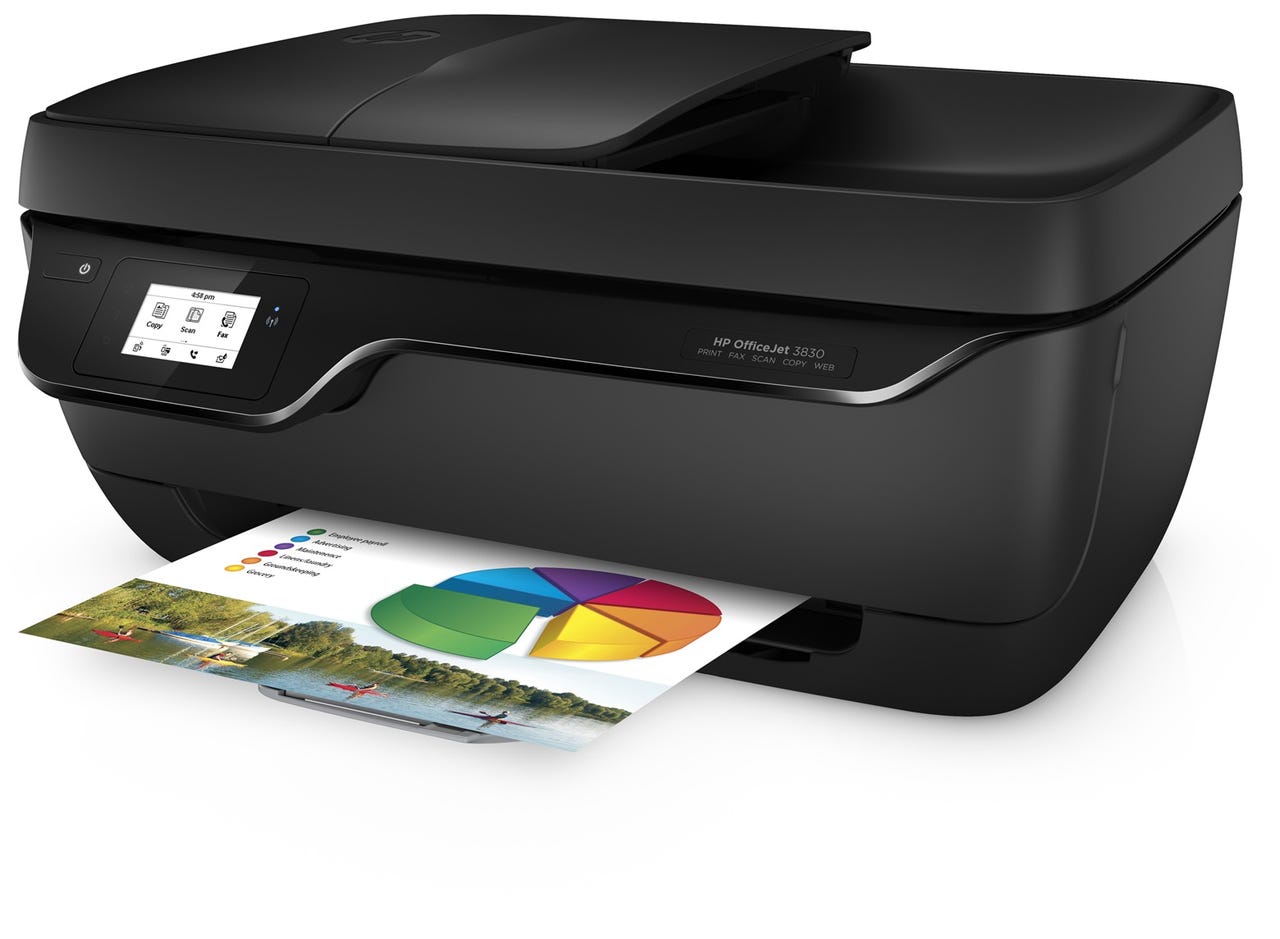Hands on: Small office scanning with the HP OfficeJet 3830


Printing is single-sided rather than duplex, which makes it a little less convenient for the office; print speeds of ten or eleven pages a minute for text and five pages a minute for mixed text and images are reasonable. Text quality is perfectly acceptable, and the colours on images we printed and copied were rich and vibrant. We didn't find the printer noisy enough to need its quiet mode (which isn't a lot more quiet, but is a little slower).
The touch screen means there is space for clear error messages and the controls are reasonably intuitive, but if you want to choose how many copies to make or how much to enlarge a copy, you can't just type in the number you want. Instead you have to swipe your finger across the screen to scroll through a horizontal list of numbers until you get the one you want, which seems unnecessarily complicated when the screen could just show you a numeric keypad
Both the three-colour and single black cartridge are on the small side; the printer warned us that the supplied colour cartridges were running low after about 40 colour full-page images. The black cartridges are a little more pricey than usual, and the cheapest way to get ink for the printer is to use HP's Instant Ink scheme where you pay £1.99 a month to automatically get new cartridges (and a prepaid envelope to send the old cartridge for recycling) when you need them, assuming you print 50 pages a month.
The scanning feature is excellent for making copies, a little less convenient for scanning because the interface expects you to stand at the scanner and send the scan to a PC, where it's saved as a PDF or JPEG (in the Documents directory - you don't get the choice). The 35-sheet automatic document feeder is a nice touch, especially the sound that plays to tell you the pages in the feeder have been detected, but it's perhaps not quite robust enough for heavy duty scanning.
It's wide enough for most, but not all magazine pages and if you've torn a page out rather than cut it out neatly, the page might jam. That's frustrating because it tends to cancel the whole scan, leaving you to pull out the jammed page - easy enough because you can just lift the lid and tug it free from the rollers - and start from the beginning.
But because the scanner shows its error message both on its own touch screen and on the screen of the PC you're scanning to, you have to clear both errors or the scanner won't be able to connect to that PC - so you're going to have to walk back to the PC as well.
It's easier to use a scanning application on your computer, which also gives you the choice of scanning from the feeder or the flatbed; if you have a document in the feeder, network scanning assumes that's what you want to scan. Either way, you're going to have to feed the stack of pages through twice if you want to scan both sides, and then merge the two PDFs created.
These issues aren't unique to the OfficeJet 3830; you're likely to run into them on any small office all-in-one device.
Just assume you can scan a few pages every now and then rather than ploughing through your entire stack of magazine clippings in one session, and you're less likely to get frustrated.
This is a small office or home office multi-function device rather than an office workhorse, and it's hard to quibble with the price.
Now read this
- Windows Mobile: Can Microsoft get us excited again?
- Open source: Free as in speech, beer - or puppy?
- Diary of a Microsoft Band user: Here's what I've found out so far
- How three years of Yammer has changed Microsoft for the better
- What 'client' means on the new Windows Server
- Pressed for Time, book review: Don't blame the technology
- How Clutter saved me from inbox 4,000